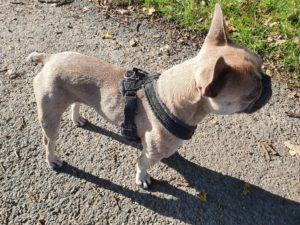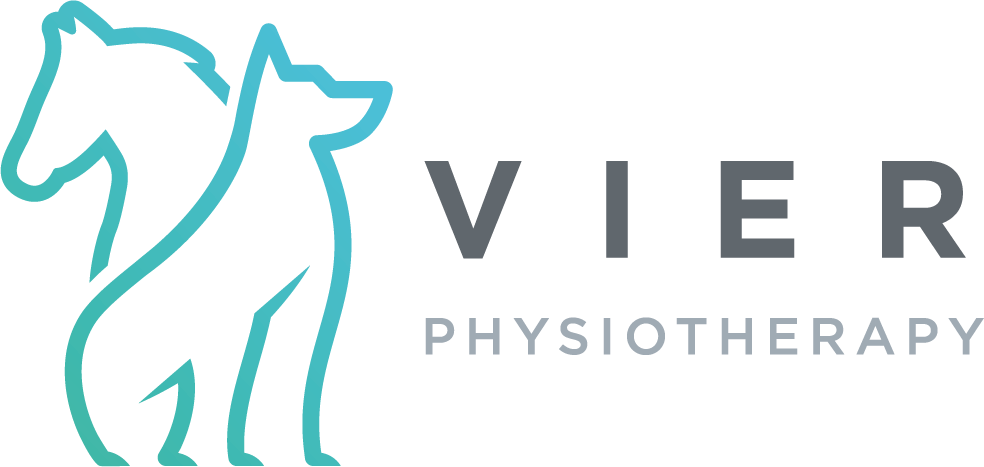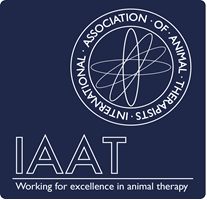Welcome to Vier Animal Physiotherapy
Meeting your animals fitness and rehabilitation needs.
Harnesses - Does one type fit all?
Dog harnesses are a common and useful piece of equipment used in the pet industry. They enable us to take our dogs out safely and securely. Whether it be for training, work or enrichment purposes, harnesses have their place.
There are many different varieties of harnesses that can be used for dogs, so which one is the right one? Moreover, why bother using one at all?
Harnesses can be used for a multitude of reasons:
- Control – for when your dog isn’t an angle at the end of the lead.
- Training – for a new puppy that isn’t used to that big wide world
- Comfort – helps support and ensures that pressure isn’t exerted in just one area of the body.
- Prevention – Can prevent injury (neck strain), pulling on the lead and escape artists
- Stability – older dogs that require a little extra help when standing from sitting/lying down and moving in general.

Things to consider and the reason for this blog…
Amongst the reasons listed above, harnesses can either benefit a dog’s gait of hinder it. What is gait? Pure and simple, it is the animal’s manner of walking. Specifically in this instance, the dogs manner of walking.
Why is this important? An animals gait can have a large impact on its musculoskeletal system. Imagine, walking around with a stone in your shoe. The discomfort you will feel. You will adjust your walk, exerting extra pressures on abnormal areas of the body, to manage that discomfort. Impact – you will begin to feel tight, sore and uncomfortable in other areas of the body due to your muscles over compensating.
Now imagine walking around in clothes that don’t quite fit right and limit your movement. Apply that analogy to your dog and an ill-fitting harness. You get the idea! Over time, your dog can become uncomfortable, tight or sore in other areas. This is due to their movements being restricted or them shifting their weight onto different areas of the body.

Does this matter?
Not only can an ill-fitting harness cause discomfort and irritation on the skin. It can have a negative effect on a deeper level. Namely on a muscular level.
As suggested above, if a dogs gait is impaired, compensatory mechanisms will occur. Affecting the musculoskeletal system. This can lead to hypertrophy (enlargement) of specific muscle, through over working and atrophy (weakening) of other muscles, through lack of use. This can then lead to further compensatory issues.
Research suggests that poor/restricted gait can lead to:
- Loss of joint conformation and function. Leading to abnormal wear
- Inflammation in the joint leading to arthritis
- Tendinopathy potentially caused by repetitive strain
- Medial shoulder syndrome
- Hastening of conditions that the dog may already be predisposed to e.g. dysplasia, spinal issues
Further research should be carried out to investigate the effects of harnesses on the canine gait. Further research could prove the assumptions however it is worth noting the impact harnesses can have, positively as well as negatively.

What makes a good harness?
Having a correct fitting harness provides overall comfort on a superficial and muscular level for your dog. So what to look for when trying and buying harnesses.
- Does it fit comfortably e.g. material does not dig into the skin
- Is the harness restricting any movements, particularly in the front limbs
- Is the harness supportive – not too lose
Always try the harness on before you buy. Assess how your dog moves when they are not restricted by a harness. Then assess how they move when they are restricted by a harness. Does this have a massive impact on altering their gait? Do they look and move comfortably? Is the harness tight or lose in certain areas?
Harnesses come in all shapes and sizes and are available in a variety of different brands. Meaning there are plenty of harnesses to choose.



